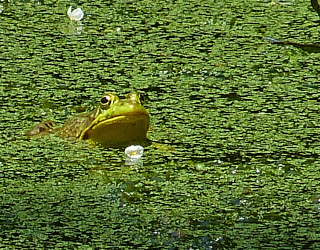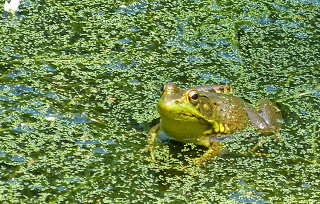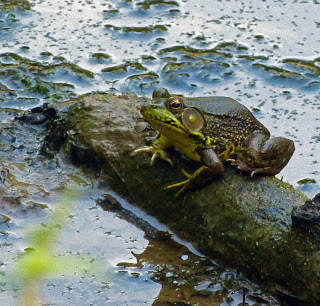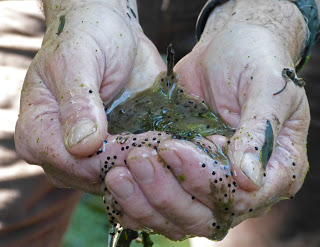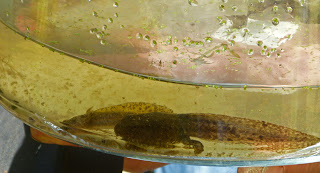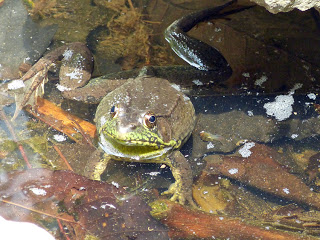Dr. Frog noted that female green frogs have a white throat, while the males have yellow throats. Actually, they don’t have much green color at all. Green frogs breed in semi-permanent or permanent fresh water.
Males call from and defend their territories. The distinctive call sounds like a plucked banjo string, usually given as a single note, but sometimes repeated, during the breeding season from April to August. They were quiet while we were all there, but by Wednesday afternoon, the chorus was in full voice, much to my surprise. Their territories can’t be too big, given the number of frogs in close proximity. See how many you can count in this short video.
Another way to tell the males from females is to look at the tympanum, or ear, next to their eyes. Mature females are typically larger than males, but the male tympanum is twice the diameter of the eye, whereas in females, the tympanum diameter is about the same as that of the eye. The dorsolateral ridges, prominent, seam-like skin folds that run down the sides of the back, distinguish the green frog from the bullfrog, which lacks them entirely.
Actual mating involves amplexus, whereby the male grasps the female with his forelimbs posterior to her forelimbs. The female releases her eggs and the male simultaneously releases sperm which swim to the egg mass. Fertilization takes place in the water. A single egg clutch may consist of 1000 to 7000 eggs, which may be attached to submerged vegetation. Yet few of the tadpoles reach maturity, since they are the favorite food of just about every other animal living in the pond.
Green frog tadpoles are olive green and iridescent creamy-white below, and eat mainly diatoms and algae. Adults eat insects, worms, and occasionally other small frogs and fish. Rather than chase their prey, they sit and eat whatever comes by. Metamorphosis (changing from the fully aquatic tadpole, to an air breather with legs) can occur within the same breeding season or tadpoles may overwinter to metamorphose the next summer. Males become sexually mature at one year, females may mature in either two or three years. Following metamorphosis, juvenile green frogs often travel from their natal ponds to neighboring ponds. Movements of up to three miles have been documented.

